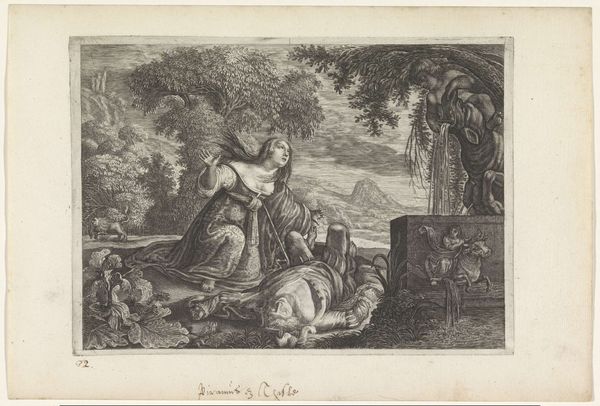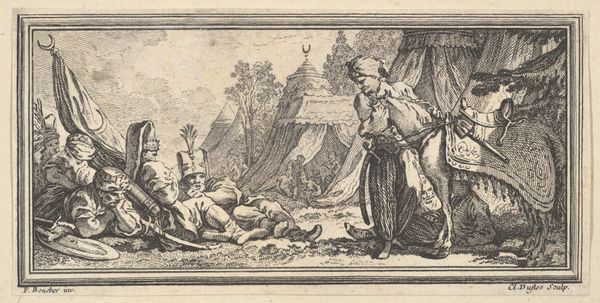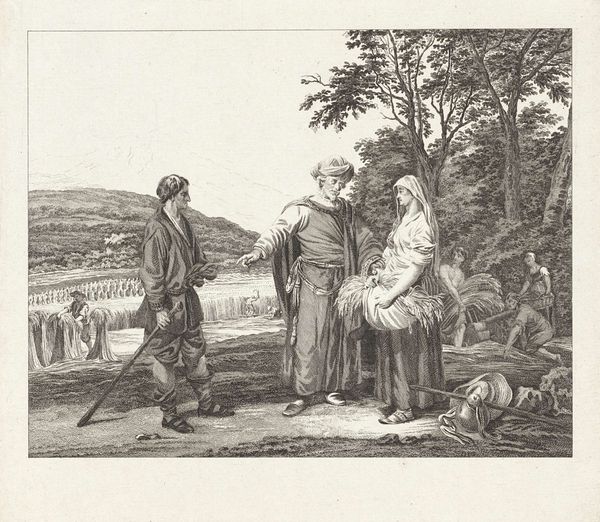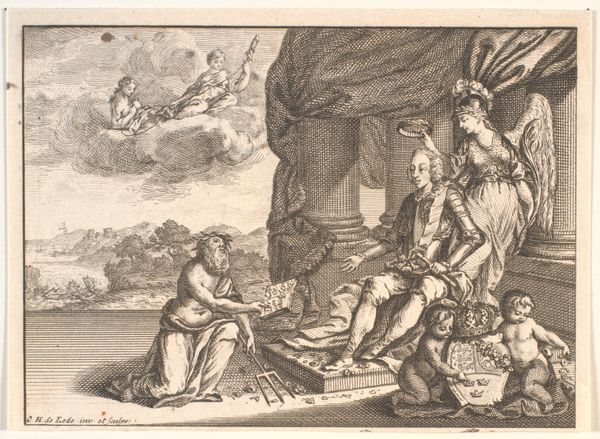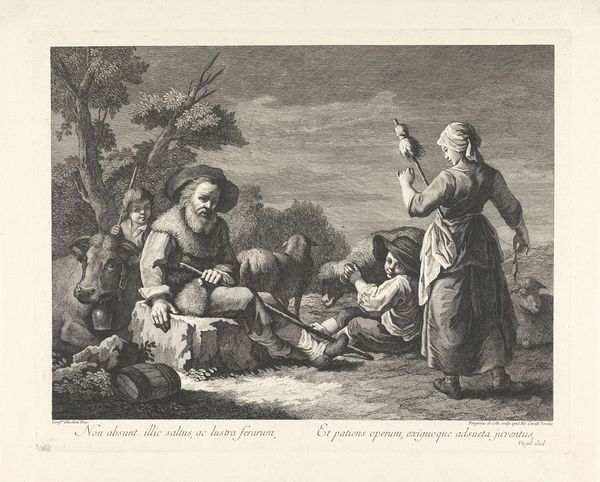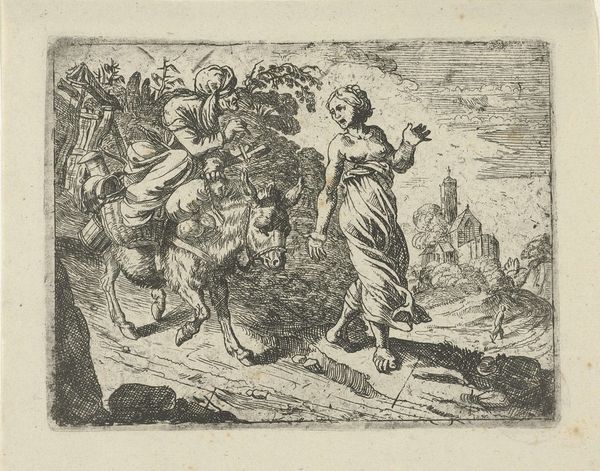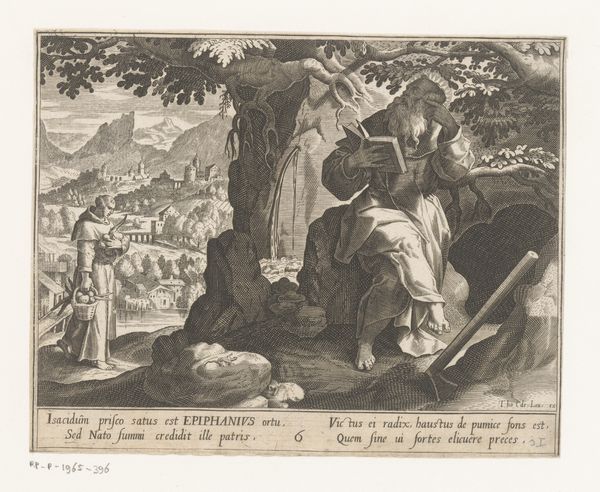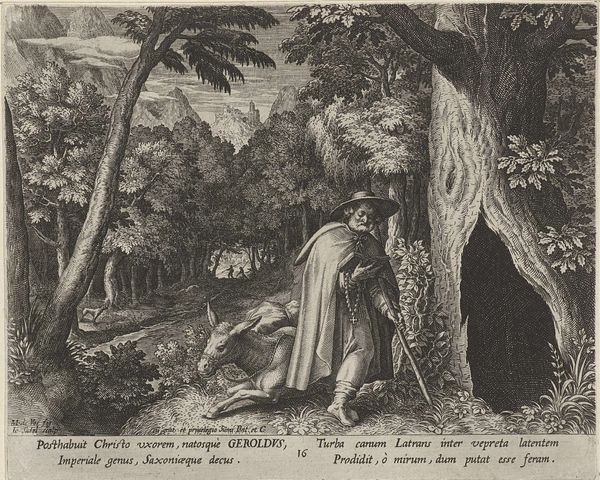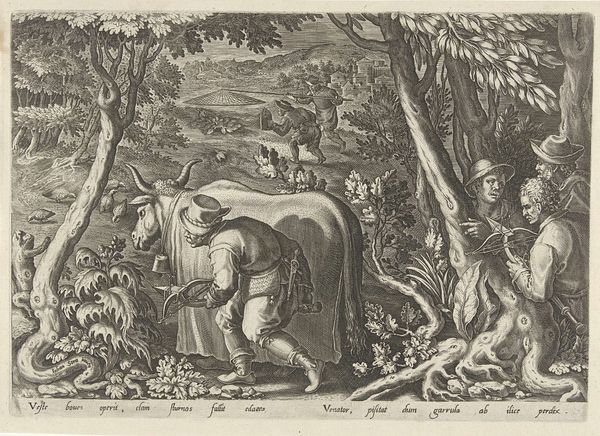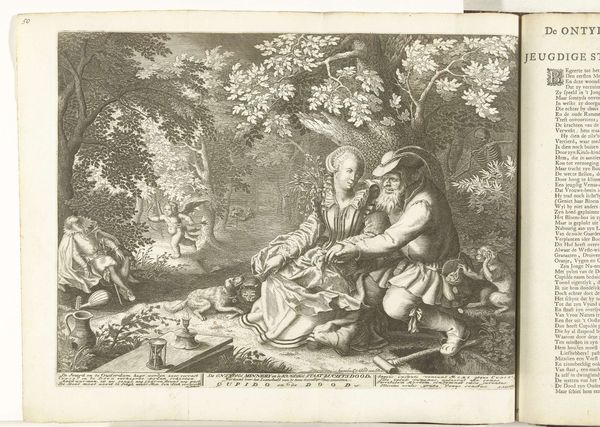
engraving
#
baroque
#
old engraving style
#
landscape
#
figuration
#
line
#
history-painting
#
engraving
Dimensions: height 163 mm, width 225 mm
Copyright: Rijks Museum: Open Domain
Philip van Gunst made this print, Deucalion en Pyrrha, using engraving, a process with a long history that speaks volumes about labor and the value of reproduction. With engraving, the image is painstakingly incised into a metal plate, typically copper, using a tool called a burin. This requires a steady hand and immense patience, as the artist cuts lines into the metal to create grooves that will hold ink. The plate is then inked, and the surface wiped clean, leaving ink only in the engraved lines. Finally, paper is pressed against the plate, transferring the image. In van Gunst's time, prints like these served as a primary means of disseminating visual information. Think of them as the social media of their day. Engravers were skilled artisans, often working collaboratively in workshops. Their labor, though demanding, allowed for the mass production of images, making art and information accessible to a wider audience. The quality of the print depends entirely on the engraver's skill, bridging craft and commerce. By understanding the process, we gain insight into the cultural and economic context in which it was created.
Comments
No comments
Be the first to comment and join the conversation on the ultimate creative platform.

